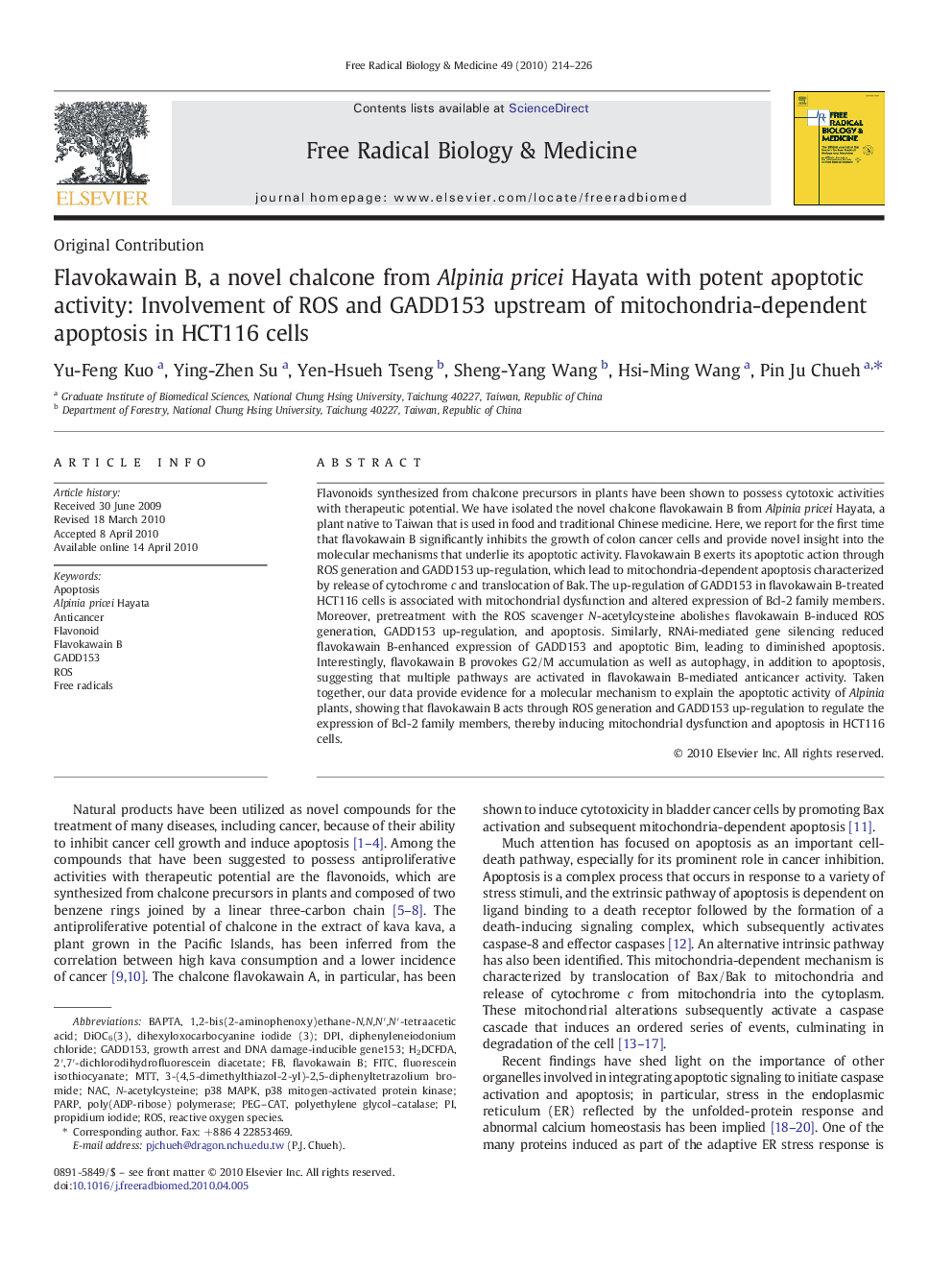| Article ID | Journal | Published Year | Pages | File Type |
|---|---|---|---|---|
| 10738595 | Free Radical Biology and Medicine | 2010 | 13 Pages |
Abstract
Flavonoids synthesized from chalcone precursors in plants have been shown to possess cytotoxic activities with therapeutic potential. We have isolated the novel chalcone flavokawain B from Alpinia pricei Hayata, a plant native to Taiwan that is used in food and traditional Chinese medicine. Here, we report for the first time that flavokawain B significantly inhibits the growth of colon cancer cells and provide novel insight into the molecular mechanisms that underlie its apoptotic activity. Flavokawain B exerts its apoptotic action through ROS generation and GADD153 up-regulation, which lead to mitochondria-dependent apoptosis characterized by release of cytochrome c and translocation of Bak. The up-regulation of GADD153 in flavokawain B-treated HCT116 cells is associated with mitochondrial dysfunction and altered expression of Bcl-2 family members. Moreover, pretreatment with the ROS scavenger N-acetylcysteine abolishes flavokawain B-induced ROS generation, GADD153 up-regulation, and apoptosis. Similarly, RNAi-mediated gene silencing reduced flavokawain B-enhanced expression of GADD153 and apoptotic Bim, leading to diminished apoptosis. Interestingly, flavokawain B provokes G2/M accumulation as well as autophagy, in addition to apoptosis, suggesting that multiple pathways are activated in flavokawain B-mediated anticancer activity. Taken together, our data provide evidence for a molecular mechanism to explain the apoptotic activity of Alpinia plants, showing that flavokawain B acts through ROS generation and GADD153 up-regulation to regulate the expression of Bcl-2 family members, thereby inducing mitochondrial dysfunction and apoptosis in HCT116 cells.
Keywords
Related Topics
Life Sciences
Biochemistry, Genetics and Molecular Biology
Ageing
Authors
Yu-Feng Kuo, Ying-Zhen Su, Yen-Hsueh Tseng, Sheng-Yang Wang, Hsi-Ming Wang, Pin Ju Chueh,
